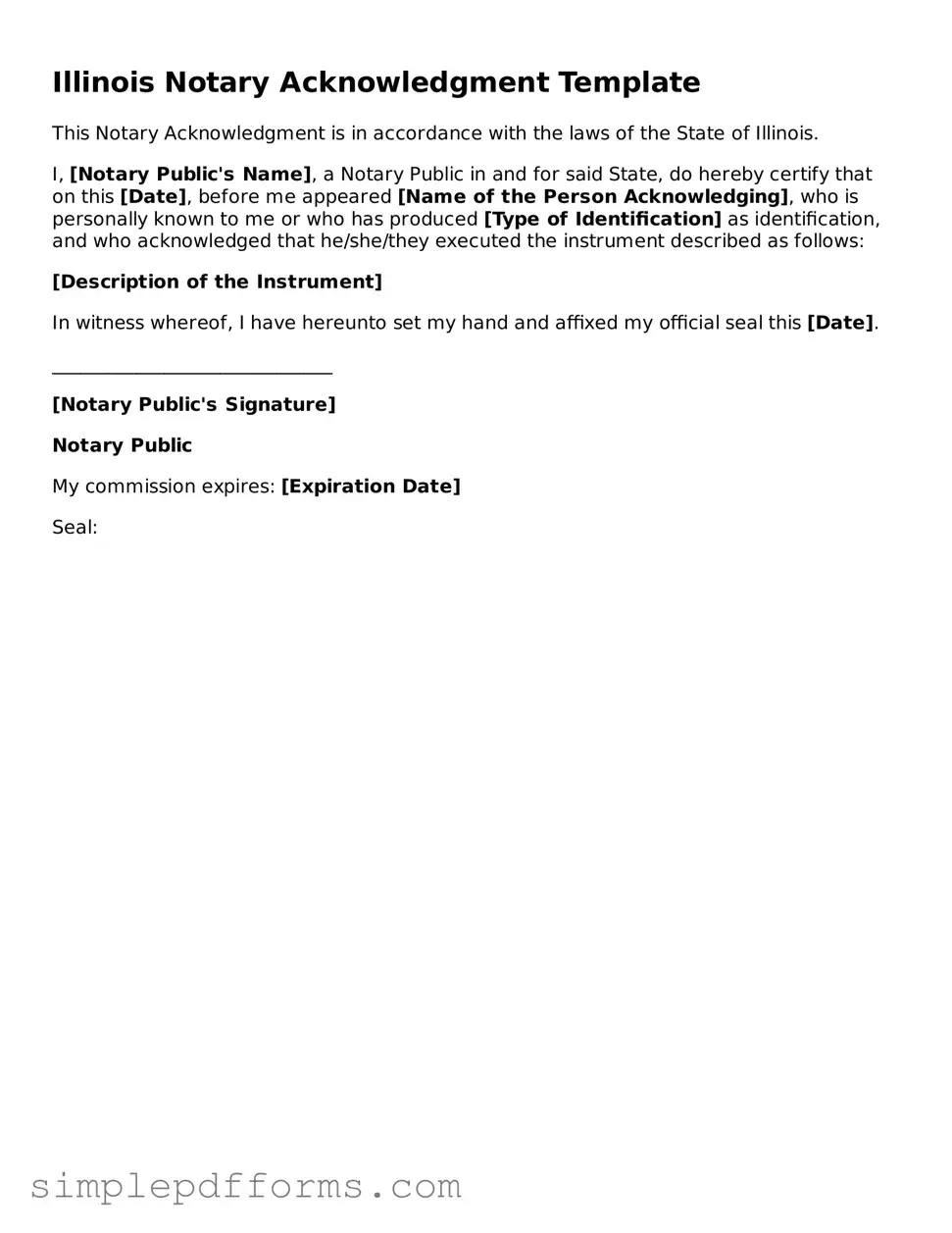Attorney-Verified Notary Acknowledgement Document for Illinois State
The Illinois Notary Acknowledgement form is a legal document used to confirm that a signer has willingly signed a document in the presence of a notary public. This form serves to authenticate the identity of the signer and ensures that the signature is valid. Understanding its purpose and requirements is essential for anyone involved in legal transactions in Illinois.
Open Notary Acknowledgement Editor Now
